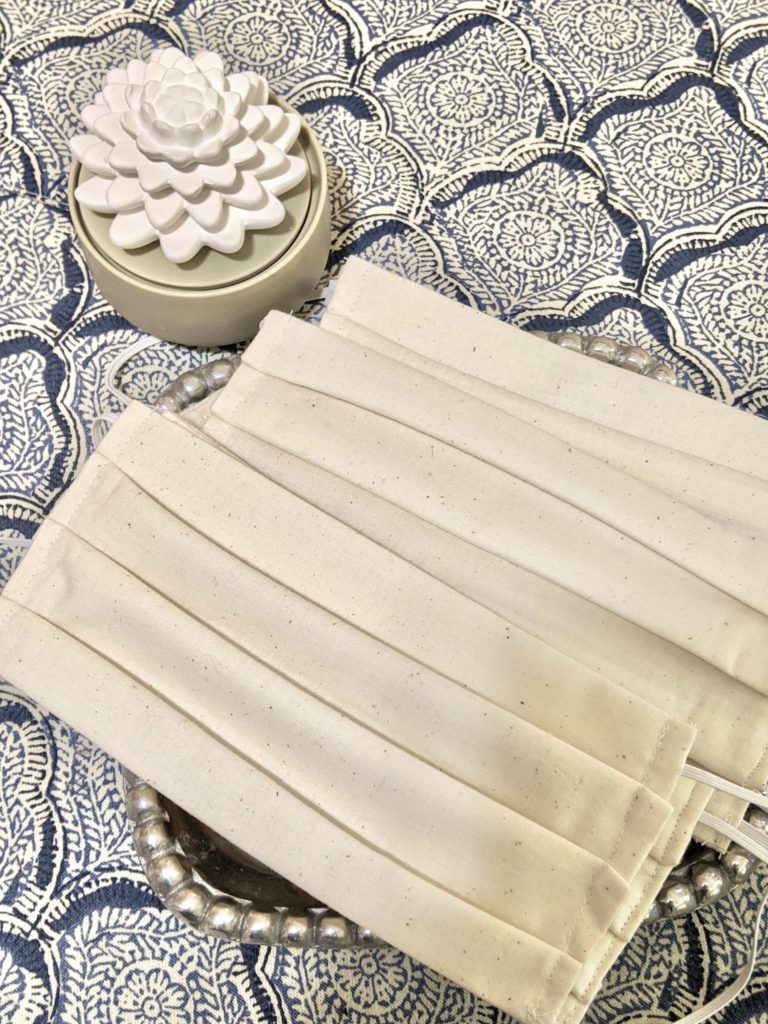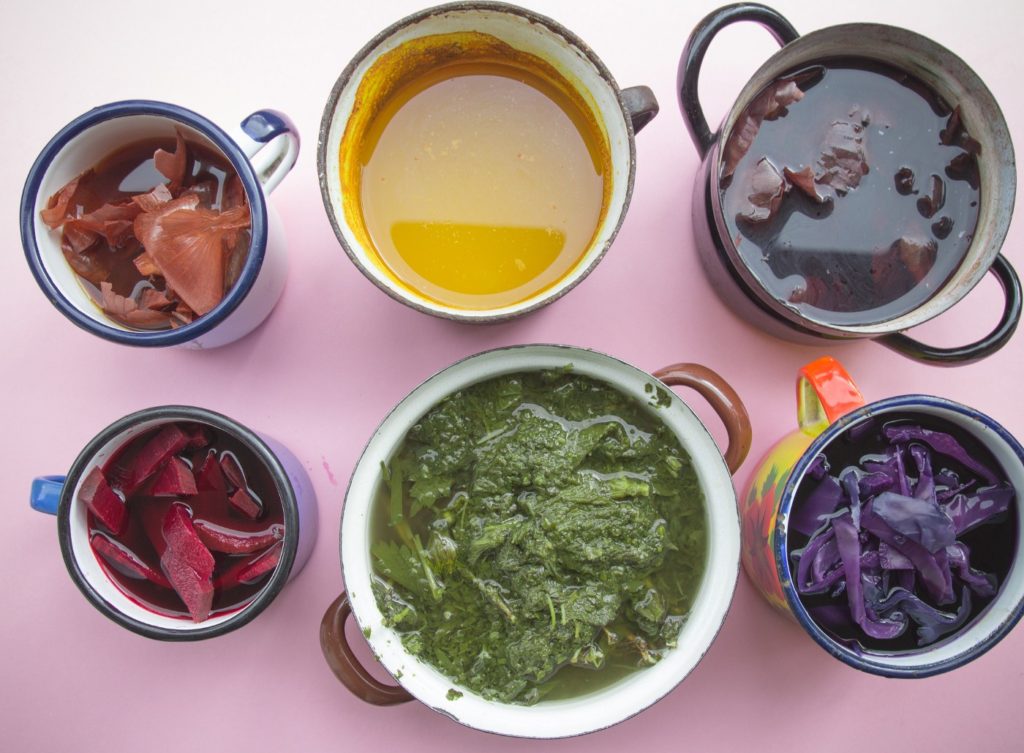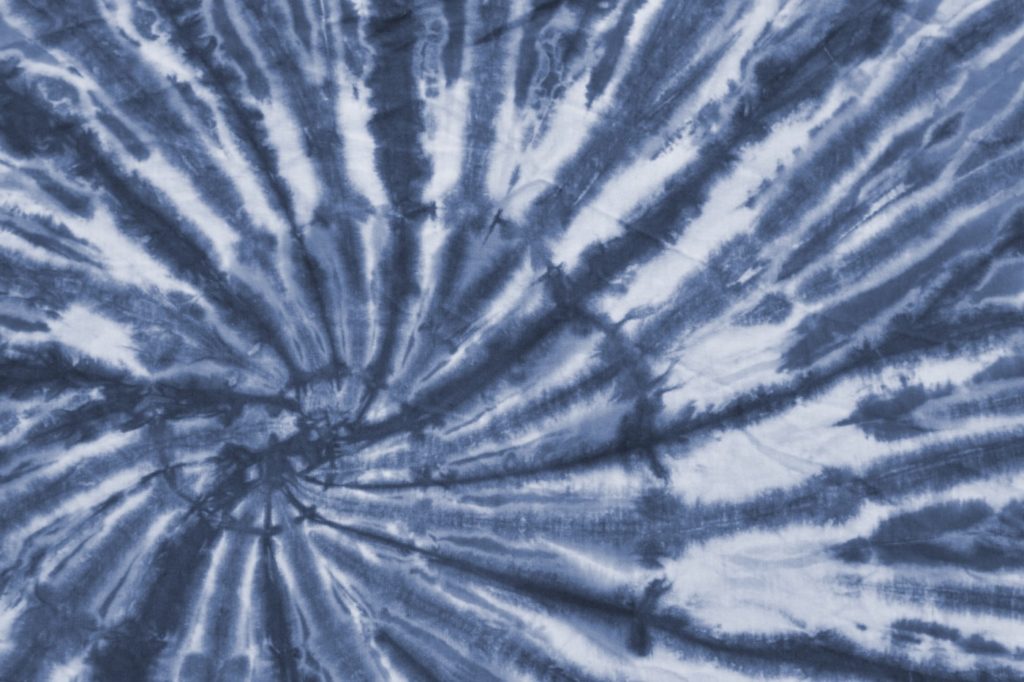Natural Dyed Masks
These days, many of us find ourselves at home. We are spending more time with our families and neighbors. The government/CDC is recommending that if we go anywhere, to wear masks for extra protection.
With all things considered, we, at Pine+Sapling , thought it may be fun to tie-dye our masks. We wanted to include you in on the fun!! We have chosen a natural dyeing recipe because one of our core values is sustainability. Today, most clothing is synthetically dyed and filled with many chemicals such as chlorine bleach and formaldehydes. Neither of these chemicals are good for you to inhale.
You can purchase your white mask here and follow the natural dyeing recipe below. There are quite a few ingredients but most things, you will find right in your kitchen.

Natural Dyeing Recipe
What you will need:
- Small saucepans
- Knife
- Strainer
- Large mixing bowl
- Measuring cup
- Funnel
- Glass Jars
- Wash buckets(or old pot)
- Rubber bands(optional for tie-dye)
- Gloves
- Water
- Salt
- Vinegar
- Plant ingredients(see below)
Pick a color:
Orange: carrots, orange peels, yellow onion skins
Yellow: lemon peels, celery leaves, turmeric, marigolds, sunflowers
Green: spinach, parsley, peppermint leaves
Blue: blackberries, red cabbage, blueberries
Brown: coffee, tea

Time to prep:
Cover your work area with newspaper or plastic sheeting to prevent dyeing countertops. To avoid dyeing your hands, be sure to wear gloves.
Chop your chosen plant material into small portions to increase surface area. If the plant is tough, smash the root with a hammer to make it fibrous.
Now, you’ll want to get your fabric ready. If you are using a mask from Pine+Sapling, we have prewashed and presoaked your mask in a mordant to help the color from fading quickly.
If you are using your own mask:
For best results, use natural fabrics such as muslin, silk, cotton, and wool. The lighter the original fabric color, the brighter your dyed fabric will be. Wash your fabric, but don’t dry it! The fabric needs to be wet for the dye to stick. Prepare a fixative or “mordant” to help the dye stick and avoid fading over time. For fruit dyes, simmer the fabric in ¼ cup salt and 4 cups of cold water. For vegetable dyes, simmer in 1 cup vinegar and 4 cups water. Boil for one hour and then rinse with cool water.

Now Let’s Get Started:
Add your chopped plant ingredients into a small saucepan and cover with twice as much water as fruit or vegetable. Place over medium heat and bring to a simmer for one hour.
Turn off the heat and let the water return to room temperature. Pour the cooled dye through a strainer and into a mixing bowl. Then funnel the dye into a glass jar or directly into wash buckets.
Soak cloth in a wash bucket with dye until it reaches your desired color. Next, place the fabric in a microwave-safe plastic bag and seal. Heat in the microwave for two minutes on high on top of paper towels or a microwave-safe plate. Remove the bag from the microwave carefully and allow it to completely cool overnight.
Launder only by hand in a very mild detergent and separate from other items of clothing to avoid staining.

I hope your family makes many memories during this time and if you decide to make these masks, feel free to share them with us on Facebook or Instagram!
And one more thing, if you are interested in learning more about sustainability, here is an article from The Washington Post. Have a great day!